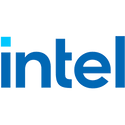
Thermaltake Intros ToughRAM D5 RGB DDR5-5600 in Multiple Color Options and with AMD EXPO Support
Thermaltake today introduced its ToughRAM D5 RGB series DDR5 memory in multiple color options that it had shown off in its 2023 CES booth. Today's release sees the memory modules in six color variants—Turquoise, Racing Green, Metallic Gold, Racing Red, White, and Black. These come with the distinctive Thermaltake "TT" design, and are capped with silicone diffusers for the 8 RGB LEDs that you can control using the TT RGB Plus 2.0 app.
Thermaltake sells these only in 32 GB (2 x 16 GB) kits, rated for DDR5-5600, 36-36-36-76 timings, and 1.1 V to 1.25 V DRAM voltage. These are based on SK Hynix M-die DRAM chips in single-rank 8x 16 Gbit configuration. What's interesting is that even to achieve its rather modest DDR5-5600 speed, Thermaltake included both Intel XMP 3.0 and AMD EXPO profiles. The company didn't reveal pricing.
Thermaltake sells these only in 32 GB (2 x 16 GB) kits, rated for DDR5-5600, 36-36-36-76 timings, and 1.1 V to 1.25 V DRAM voltage. These are based on SK Hynix M-die DRAM chips in single-rank 8x 16 Gbit configuration. What's interesting is that even to achieve its rather modest DDR5-5600 speed, Thermaltake included both Intel XMP 3.0 and AMD EXPO profiles. The company didn't reveal pricing.























































